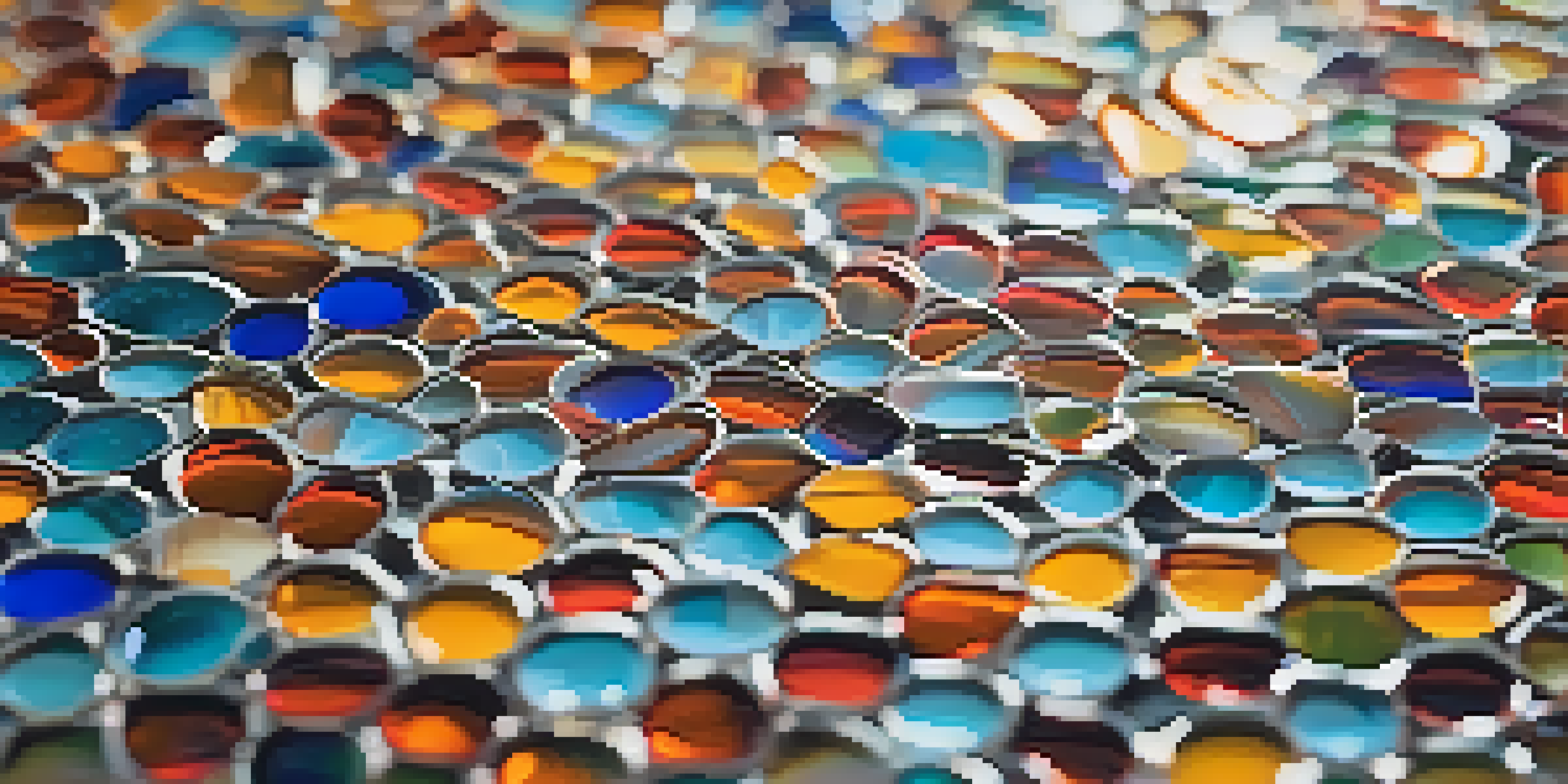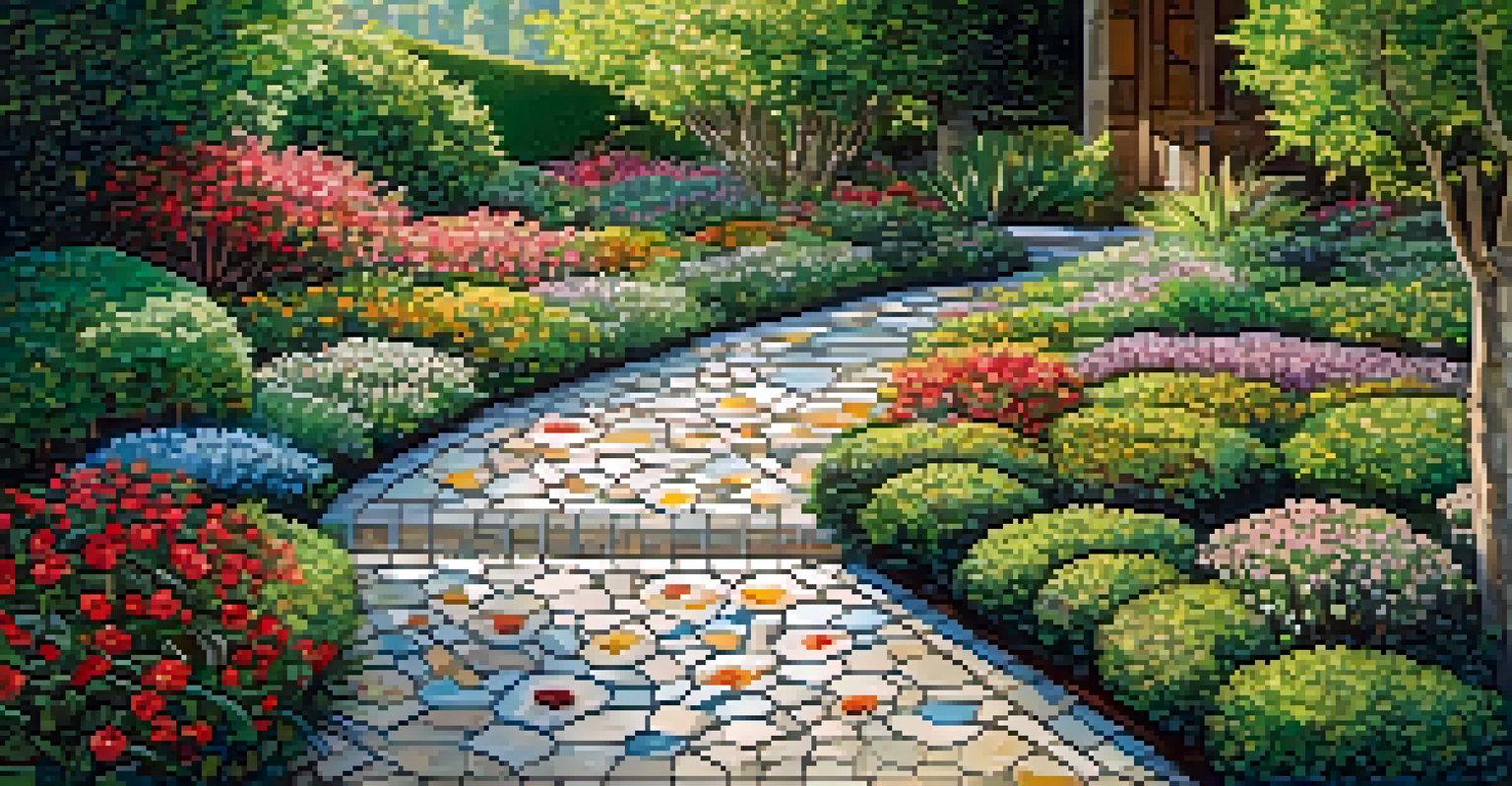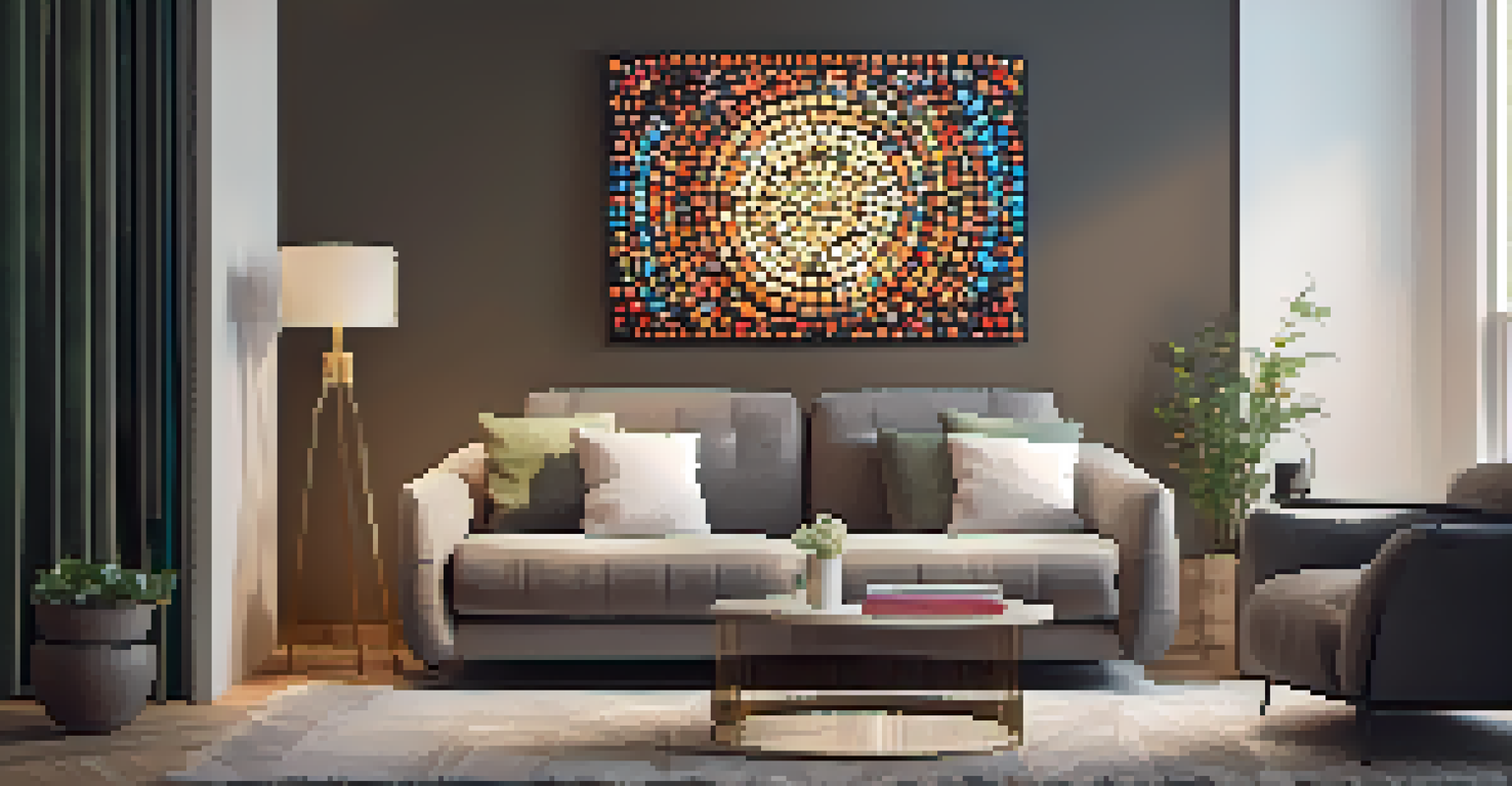Exploring the Art of Mosaics: Techniques and Creative Ideas

Understanding the History and Significance of Mosaics
Mosaics have a rich history that dates back to ancient civilizations, where they were used to decorate everything from floors to walls. The intricate designs tell stories, celebrate culture, and showcase craftsmanship. In many ways, mosaics serve as a visual diary of the times and places they come from, reflecting the values and aesthetics of their era.
Art is not what you see, but what you make others see.
Throughout history, mosaics have evolved, adapting to various artistic movements and styles. From the opulent Roman baths adorned with colorful patterns to the stunning Byzantine churches featuring gold-tinted tiles, each era has left its mark. This historical journey highlights the enduring nature of mosaics, proving they are more than just art—they are a connection to our past.
Today, mosaics continue to inspire artists and enthusiasts alike, merging traditional techniques with modern design concepts. As we explore the realm of mosaics, understanding their background enriches our appreciation for this timeless art form.
Essential Materials for Mosaic Art Creation
Creating a mosaic requires a variety of materials, each adding a unique touch to the final piece. Common materials include ceramic tiles, glass shards, stones, and even recycled items like bottle caps or broken dishes. The choice of materials often reflects the artist’s vision and the intended theme of the artwork.

When selecting materials, consider factors such as durability and texture. For example, glass tiles can create vibrant reflections, while stone pieces offer a more rustic feel. Mixing materials not only enhances visual interest but also allows for experimentation, leading to innovative designs that surprise and delight.
Mosaics Reflect Cultural History
Mosaics serve as a visual diary, showcasing the values and artistic styles of different historical eras.
Don’t forget about adhesives and grouts, which are crucial for assembling your mosaic. Using the right products ensures your artwork stands the test of time, making it a lasting addition to your space. With the right materials in hand, you’re ready to embark on your mosaic-making journey.
Exploring Different Mosaic Techniques for Beginners
For those new to mosaic art, it's helpful to start with some basic techniques. The direct method, where tiles are adhered directly to the substrate, is often the easiest for beginners. This approach allows for immediate visualization of the design, making it a great way to build confidence as you create your first pieces.
Every artist dips his brush in his own soul, and paints his own nature into his pictures.
Another popular technique is the indirect method, where tiles are first arranged on a backing and then transferred to the final surface. This method requires more planning and patience, but it can yield stunning results. As you become more comfortable, experimenting with these techniques can help you discover your personal style.
Don’t hesitate to explore mixed media approaches as well! Combining mosaics with painting or other art forms can lead to unique and striking compositions. The key is to enjoy the process and let your creativity shine.
Choosing the Right Design for Your Mosaic Project
Choosing a design is a crucial step in the mosaic-making process. It can be as simple as a geometric pattern or as complex as a portrait. Starting with a basic sketch can help you visualize the final outcome, allowing for adjustments before you begin assembling your pieces.
Consider the space where your mosaic will reside when selecting a design. A large, bold piece may work well in an open area, while intricate details might be better suited for a smaller, more intimate setting. This consideration not only enhances the aesthetic but also ensures the artwork complements its surroundings.
Materials Impact Mosaic Design
The choice of materials like tiles and glass plays a crucial role in the aesthetic and durability of mosaic art.
Additionally, don’t shy away from personalizing your design. Incorporating elements that reflect your interests or experiences can make your mosaic even more special. It’s all about creating something that resonates with you and tells your story.
Techniques to Enhance Your Mosaic's Visual Appeal
To elevate your mosaic art, consider techniques that enhance depth and texture. Layering different materials can create interesting shadows and highlights, adding dimension to your piece. For example, glass tiles can catch light beautifully, while matte tiles can provide contrast.
Color choice plays a significant role in the overall feel of your mosaic. Think about color theory and how certain combinations evoke different emotions. Using a harmonious palette can create a calming effect, while bright, contrasting colors can energize a space.
Finally, don’t underestimate the power of grout color. While traditional white or gray grout is common, experimenting with colored grout can dramatically change the appearance of your mosaic. It's a small detail that can have a big impact, so have fun with it!
Incorporating Mosaics into Home Decor
Mosaics can be a stunning addition to home decor, providing a unique focal point in any room. Think of a vibrant mosaic table or a decorative wall plaque that draws the eye and sparks conversation. These pieces not only add beauty but also showcase your artistic flair.
Consider using mosaics in unexpected places, such as outdoor patios, garden paths, or even as backsplashes in kitchens. Their versatility allows them to blend seamlessly with various design styles, from rustic to modern. By incorporating mosaics into your home, you're adding a personal touch that reflects your style.
Techniques Enhance Mosaic Creativity
Exploring various techniques and incorporating personal elements can significantly elevate the uniqueness and appeal of mosaic projects.
Don’t forget about smaller projects, like mosaic coasters or picture frames, which can serve as delightful accents. These smaller pieces are perfect for experimenting with design and materials, allowing you to express your creativity in a manageable way.
Tips for Maintaining and Caring for Your Mosaic Art
Proper care and maintenance are essential for preserving the beauty of your mosaic art. Regular dusting with a soft cloth can help keep your artwork looking fresh. If your mosaic is outdoors or in a high-traffic area, consider using a mild soap and water solution for deeper cleaning.
It's also important to protect your mosaics from harsh weather conditions if they are placed outside. Using sealants can help shield them from moisture and fading, ensuring their colors remain vibrant. If you notice any chips or cracks, addressing these issues promptly can prevent further damage.

Lastly, appreciate the process of caring for your mosaic art as part of your creative journey. Each piece tells a story, and maintaining it allows you to reflect on the time and effort you invested in your craft. With a little care, your mosaics can be cherished for years to come.